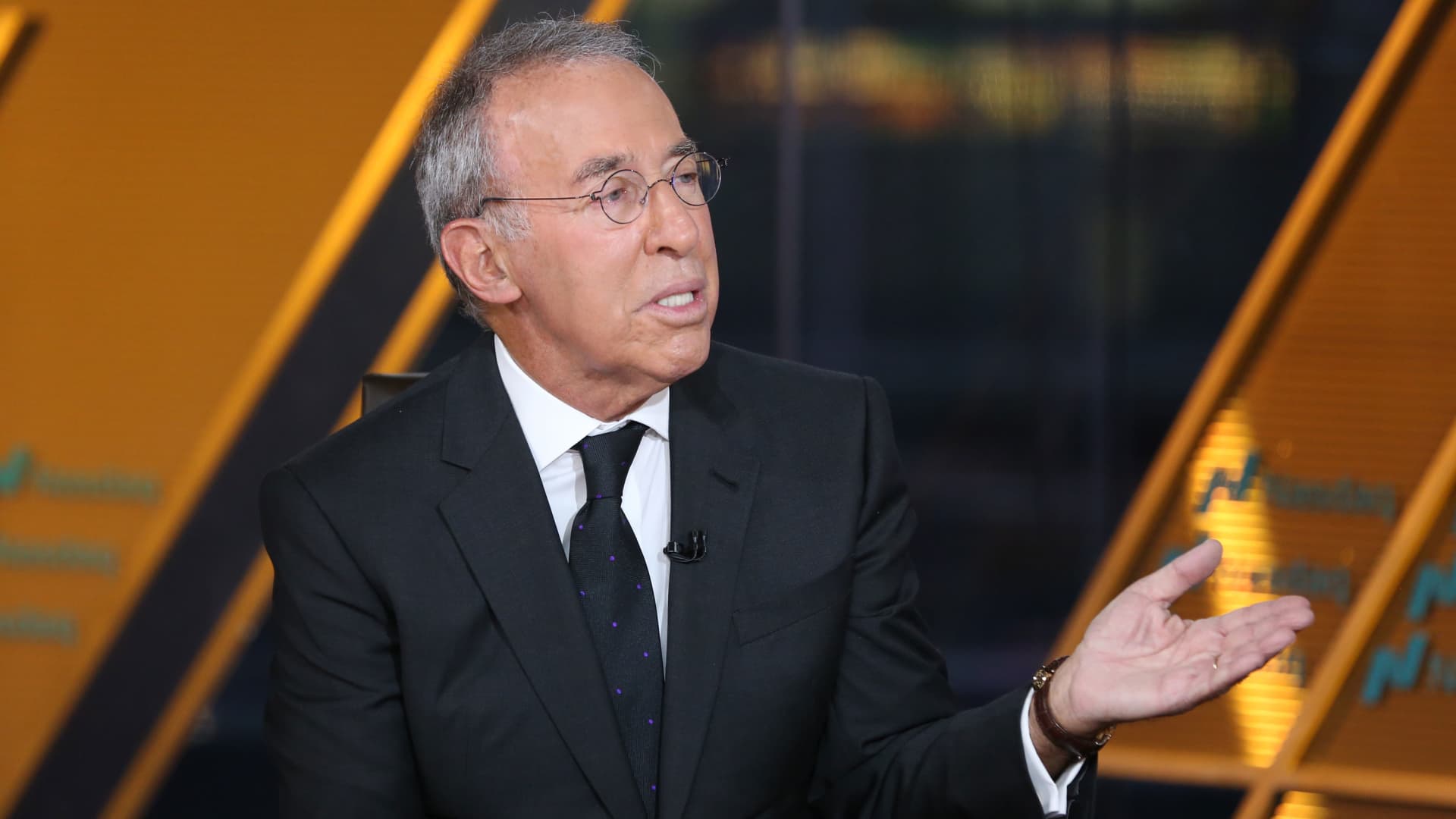Apple shares fall as Cook says ‘very difficult’ to predict tariff costs beyond June

Apple reported second fiscal-quarter earnings Thursday that beat Wall Street expectations, but the company’s closely-watched Services division came up light versus estimates.
Shares of the iPhone maker fell as much as 4% in extended trading.
Here’s how Apple did versus consensus estimates for the quarter ending in March:
- EPS: $1.65 vs. $1.63 estimated by LSEG
- Revenue: $95.4 billion vs. $94.66 billion estimated by LSEG
- iPhone revenue: $46.84 billion vs. $45.84 billion estimated, per StreetAccount
- Mac revenue: $7.95 billion vs. $7.77 billion estimated, per StreetAccount
- iPad revenue: $6.4 billion vs. $6.20 billion estimated, per StreetAccount
- Wearables, Home, and Accessories revenue: $7.52 billion vs. $7.95 billion, per StreetAccount
- Services revenue: $26.65 billion vs. $26.70 billion, per StreetAccount
- Gross margin: 47.1% vs. 47.1%, per StreetAccount
Cook provided Apple’s first comments on the impact of tariffs on its business on an earnings call with analysts, saying the company saw “limited impact” in the March quarter because it was able to optimize its supply chain.
Apple expects overall revenue to grow “low to mid-single digits” on an annual basis during the current quarter, ending in June, finance chief Kevan Parekh said on the call. Apple reported $85.78 billion in sales during the June quarter last year.
The company also expects gross margin to come in at 46% at the midpoint, taking into account tariff costs. Analysts were looking for third-quarter guidance of $1.48 in earnings per share on $89.45 billion of sales.
Apple expects tariffs to add $900 million to its costs for the current quarter, assuming no new tariffs or other major changes occur, Cook said on the call. However, he added that it is “very difficult” to predict beyond June “because I’m not sure what will happen with tariffs.”
“We will manage the company the way we always have with thoughtful and deliberate decisions, with a focus on investing for the long term and with dedication to innovation and the possibilities it creates,” Cook said on the call. “As we look ahead, we remain confident.”
Cook told CNBC that Apple is already sourcing about half of the iPhones for the U.S. from India, and most of its other products for the U.S. from Vietnam, where tariffs are lower than they are from China. Apple still makes the “vast majority” of its products for other countries in China, Cook said.
The iPhone uses a lot of chips made domestically, said Cook, adding that Apple is buying 19 billion chips this year from the U.S.
“With an iPhone, you really have to go a step lower and look at the individual parts and where they come from,” he said.
Apple said its board authorized up to $100 billion in share repurchases this quarter, down from $110 billion in authorization last year. Apple also said it would pay a dividend of 26 cents per share, a 4% increase.
“We continue to plan for annual dividend increases,” Cook said.
The company reported $1.65 per share on $24.78 billion of net income during the quarter, versus $23.64 billion, or $1.53 per share, in the year-ago period.
The company’s most important product line, iPhones, topped estimates at $46.8 billion in sales during the quarter. The overall product line’s sales were up just under 2% on an annual basis.
Apple’s profitable Services division includes iCloud subscriptions, services like Apple Music and Apple TV+, warranties and revenue from search licensing deals like its agreement with Google.
Cook hailed Services growth to $26.65 billion in revenue during the quarter, an annual increase of 11.65%. However, Services revenue came in slightly under StreetAccount expectations, and last year, Apple’s services division grew 14.2% during the March quarter.
Apple hardware generally did well during the quarter.
Mac sales rose nearly 7% to just under $8 billion, and iPad sales were up 15% on an annual basis to $6.4 billion. Apple introduced new mid-priced iPad Air and MacBook Air models in March.
However, Apple’s wearables division, which includes Apple Watch, AirPods and accessories sales, declined 5% versus the same period last year to $7.52 billion in revenue. Cook attributed the decline, in part, to the launch of the Vision Pro headset in the year ago quarter.
Sales in Greater China, which includes Taiwan and Hong Kong, were down slightly year-over-year at $16 billion. Cook said that China sales were accelerating on a quarterly basis, and that Apple sales in the region would have been flat if not for foreign exchange rates.
On the other hand, sales in the Americas, Apple’s largest market that has seen some increased consumer demand ahead of tariffs, rose nearly 8%. Cook told CNBC’s Steve Kovach that Apple had not seen evidence of order “pull forward” because of tariffs.
“We don’t believe that there was a significant pull forward due to tariffs into the March quarter,” Cook said. “There’s no obvious evidence of it.”
During the quarter, Apple delayed some of its AI features announced last summer to the “coming year,” which some analysts said might reduce the appeal of Apple’s latest iPhones.
This included features for Apple’s Siri AI voice assistant that were the focus of commercials the company has since taken down.”We need more time to complete our work on these features so they meet our high quality bar,” Cook said on an earnings call with analysts.
WATCH: Street’s biggest Apple bear says a production move to India is unrealistic









